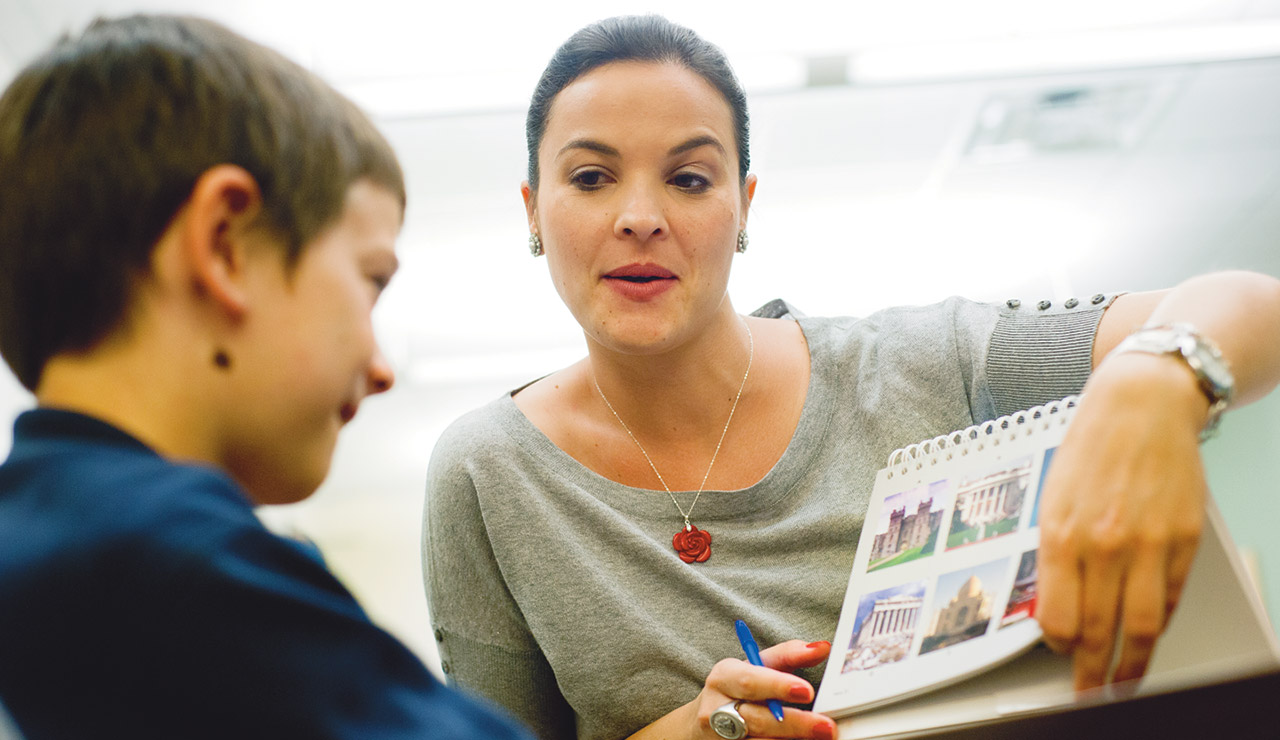
Faculty Rounds
Priscila Caçola, assistant professor of kinesiology, works with a student.
Program helps kids improve their moves
When kinesiology Assistant Professor Priscila Caçola started recruiting for a study on developmental coordination disorder in spring 2012, parents showed up with their kids—and lots of questions.
Sometimes called dyspraxia, DCD is a neurodevelopmental condition characterized by poor motor skills that interfere with daily activities, often resulting in problems with handwriting, coordination, and/or balance. Although DCD affects 5-6 percent—or more—of schoolchildren, resources for kids and their parents are scarce.
Dr. Caçola, director of UTA’s Developmental Motor Cognition Lab, quickly realized she could help. That fall, she started the Little Mavs Movement Academy, a group motor skill intervention program that helps kids ages 6 to 15 with movement and coordination difficulties. Currently 25 kids are enrolled in the program, which meets once a week.
“I thought it was a great way for UTA students to learn how to work with kids. We could create a community,” Caçola says, noting that children with DCD often suffer from anxiety, depression, or low self-esteem related to their poor motor ability. “They understand really well that they have poor motor skills. It’s one of the few developmental disorders where the kids are aware that they are different.”
She thought working in a group would help the children feel better and be more motivated. Preliminary research shows the intervention is helping with peer problems, improving anxiety levels, and boosting confidence.
Caçola also has conducted research showing lack of coordination in catching a ball, walking a straight line, or writing in between the lines is actually a spatial issue.
“It’s not that their muscles are not working correctly, it’s that they can’t estimate where they should be correctly—and that’s a huge role in catching a ball,” she says. “One of the things I’m looking at is coincidence timing, which is being able to match your body to an object in space at the same time.”
An experiential paradigm in her lab involves kids intercepting objects that move to and away from them to see how those with DCD compare to typically developing children. Initial research shows DCD kids are 3-6 centimeters off compared to others.
“They aren’t ‘not catching’ the ball because they have balance problems. It’s because they don’t know where the ball is,” she says. “They are 2½ inches off. It’s really interesting.”
